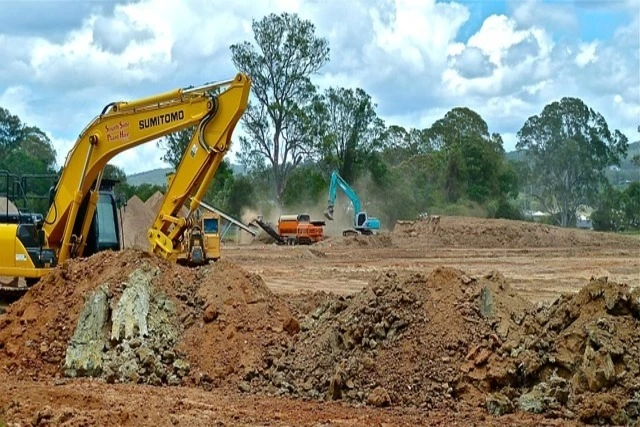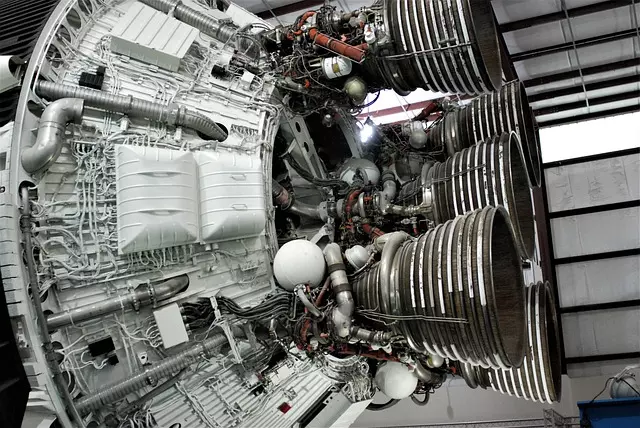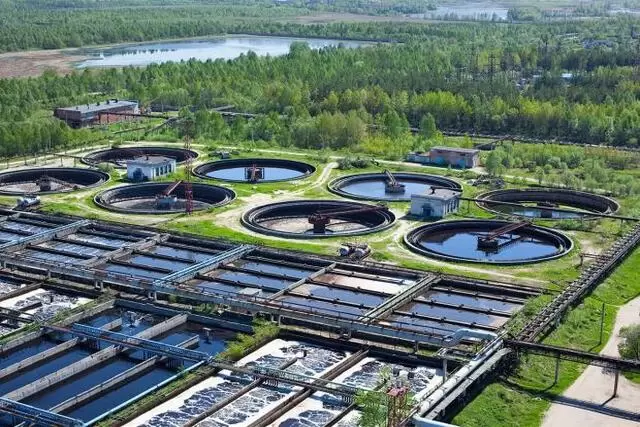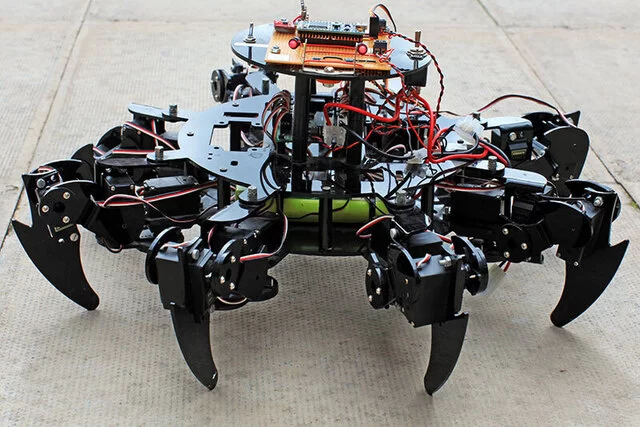There are dozens and dozens of different types of engineering. Still, when it comes down to the basics, engineering is about using specialized bases of knowledge to solve the technical problems confronting societies.
Since we encounter a wide variety of issues, we have an equally wide range of engineering disciplines, many of which are highly specialized and designed to solve those problems.
There are so many types of engineering that students often aren’t sure which kind they want to study.
One of the first steps to figuring out whether an engineering degree is right for you — and, if so, which field you should choose — is to learn about the key differences among the major types of engineering.
Also Read: Engineering Disciplines
Table of Contents
- 21 Types of Engineering
- 1. Electrical Engineering
- 2. Mechanical Engineering
- 3. Civil Engineering
- 4. Chemical Engineering
- 5. Aerospace Engineering
- 6. Environmental Engineering
- 7. Biomedical Engineering
- 8. Structural Engineering
- 9. Computer Engineering
- 10. Electronic Engineering
- 11. Automotive Engineering
- 12. Materials Engineering
- 13. Software Engineering
- 14. Petroleum Engineering
- 15. Geotechnical Engineering
- 16. Industry Engineering
- 17. Marine Engineering
- 18. Robotics Engineering
- 19. Mechatronics Engineering
- 20. Agricultural Engineering
- 21. Mining engineering
- Which is the Best Field in Engineering?
- Popular Posts Right Now!
21 Types of Engineering
The following are the types of Engineering:
1. Electrical Engineering
Electrical engineering focuses on the design, testing, and manufacturing of electrical components, such as motors, navigation, communications systems, and power generation. They work in a range of industries, including research, manufacturing, telecommunications, and more.

Electrical engineering is one of the industry’s broadest fields, which means what you can do varies widely from one sector to another.
From working with circuits to making computers and other electronics used to build fiber-optic networks or vision sensors for cars, many disciplines employ electrical engineers.
2. Mechanical Engineering
Mechanical engineering designs, builds, and develops mechanical and thermal sensing devices, such as engines, tools, and machines.
Mechanical engineering is one of the broadest engineering fields, and it can be found in a huge range of products, from electric generators to batteries to refrigeration systems.

Mechanical engineers analyze projects to determine how a mechanical device can be used and then design and test machines to help the project.
They can also investigate equipment that has failed to determine how part of the machine needs to be repaired.
3. Civil Engineering

Civil engineering solves infrastructure problems. The projects they design, build, and maintain span a wide range in both the public and private sectors, including bridges, roads, tunnels, dams, and water and sewer systems.
Infrastructure such as the Brooklyn Bridge, the Erie Canal, and the Thames Tunnel in London were all made possible because of the work of civil engineering.
4. Chemical Engineering
Chemical engineers use their knowledge of sciences – such as chemistry, biology, physics, and math – to solve problems that affect the use or production of chemicals, food, drugs, and more. They often work in offices and laboratories, and nearly all of them work full-time.

Chemical engineers use their knowledge in the sciences as well as manufacturing to bring chemical processes developed in a laboratory to a commercial or industrial process to create products and then evaluate and improve those processes.
Chemical engineers translate processes developed in the lab into practical applications for the commercial production of products and then work to maintain and improve those processes.
They rely on the main foundations of engineering: math, physics, and chemistry (though biology is playing an increasing role).
The primary function of chemical engineers is to design and troubleshoot processes for the production of chemicals, fuels, foods, pharmaceuticals, and biologicals, just to name a few.
They are most often employed by large-scale manufacturing plants to maximize productivity and product quality while minimizing costs.
5. Aerospace Engineering
Aerospace engineering is the field of engineering concerned with the design, development, testing, and production of aircraft, spacecraft, and any related systems. It focuses on the problems related to both atmospheric and space flight.

Much like electrical engineering, software engineering, and firmware engineering, aerospace engineering started abruptly with an invention that changed the world.
Also Read: Aluminium and Copper as Building Materials
6. Environmental Engineering
Environmental engineers use the principles of engineering, soil science, biology, and chemistry to develop solutions to environmental problems.
They work to improve recycling, waste disposal, public health, and water and air pollution control.

Environmental engineers work in a variety of settings because of the nature of the tasks they do.
When they are working with other engineers and urban and regional planners, environmental engineers are likely to be in offices.
When they are carrying out solutions through construction projects, they are likely to be at construction sites.
7. Biomedical Engineering
Biomedical engineering is the application of the principles and problem-solving techniques of engineering to biology and medicine.
This is evident throughout healthcare, from diagnosis and analysis to treatment and recovery, and has entered the public conscience through the proliferation of implantable medical devices, such as pacemakers and artificial hips, to more futuristic technologies, such as stem cell engineering and 3-D printing of biological organs.

Engineering itself is an innovative field, the origin of ideas leading to everything from automobiles to aerospace, skyscrapers to sonar.
Biomedical engineering focuses on the advances that improve human health and health care at all levels.
Biomedical engineers focus on advances in technology and medicine to develop new devices and equipment for improving human health.
For example, they might design software to run medical equipment or computer simulations to test new drug therapies.
Bioengineers and biomedical engineers work in manufacturing, research facilities, and for a variety of other employers. Most work full-time, and some work more than 40 hours per week.
Biomedical engineers work in a wide variety of settings and disciplines. There are opportunities in the industry for innovating, designing, and developing new technologies; in academia, furthering research and pushing the frontiers of what is medically possible as well as testing, implementing, and developing new diagnostic tools and medical equipment; and in government for establishing safety standards for medical devices.
Many biomedical engineers find employment in cutting-edge start-up companies or as entrepreneurs themselves.
8. Structural Engineering
Structural engineering is a sub-discipline of civil engineering in which structural engineers are trained to design the bones and muscles that create the form and shape of man-made structures.
Structural engineers must also understand and calculate the stability, strength, rigidity, and earthquake susceptibility of built structures for buildings and nonbuilding structures.

The structural designs are integrated with those of other designers, such as architects and building services engineers and often supervise the construction of projects by contractors on site.
They can also be involved in the design of machinery, medical equipment, and vehicles where structural integrity affects functioning and safety.
Structural engineering theory is based on applied physical laws and empirical knowledge of the structural performance of different materials and geometries.
Structural engineering design uses several relatively simple structural concepts to build complex structural systems.
Structural engineers are responsible for making creative and efficient use of funds, structural elements, and materials to achieve these goals.
9. Computer Engineering
Computer engineering is a branch of electrical engineering that integrates several fields of computer science and electronic engineering required to develop computer hardware and software.
Computer engineers not only require training in electronic engineering, software design, and hardware-software integration but also software engineering.

It uses the techniques and principles of electrical engineering and computer science but also covers areas such as artificial intelligence (AI), robotics, computer networks, computer architecture, and operating systems.
Computer engineers are involved in many hardware and software aspects of computing, from the design of individual microcontrollers, microprocessors, personal computers, and supercomputers to circuit design.
This field of engineering not only focuses on how computer systems themselves work, but it also demands them to integrate into the larger picture. Robots are one of the applications of computer engineering.
Computer Engineering usually deals with areas including writing software and firmware for embedded microcontrollers, designing VLSI chips, designing analog sensors, designing mixed signal circuit boards, and designing operating systems.
Computer engineers are also suited for robotics research, which relies heavily on using digital systems to control and monitor electrical systems like motors, communications, and sensors.
In many institutions of higher learning, computer engineering students are allowed to choose areas of in-depth study in their junior and senior years because the full breadth of knowledge used in the design and application of computers is beyond the scope of an undergraduate degree.
Other institutions may require engineering students to complete one or two years of general engineering before declaring computer engineering as their primary focus.
Also Read: Best Engineering Universities in India | Top courses
10. Electronic Engineering
Electronics engineering is a sub-discipline of electrical engineering that emerged in the early 20th century and is distinguished by the additional use of active components such as semiconductor devices to amplify and control electric current flow.
Previously, electrical engineering only used passive devices such as mechanical switches, resistors, inductors, and capacitors.
It covers fields such as analog electronics, digital electronics, consumer electronics, embedded systems, and power electronics.
It is also involved in many related fields, for example, solid-state physics, radio engineering, telecommunications, control systems, signal processing, systems engineering, computer engineering, instrumentation engineering, electric power control, and robotics.

11. Automotive Engineering
Automotive engineering, along with aerospace engineering and naval architecture, is a branch of vehicle engineering that incorporates elements of mechanical, electrical, electronic, software, and safety engineering as applied to the design, manufacture, and operation of motorcycles, automobiles, and trucks and their respective engineering subsystems.

It also includes the modification of vehicles. The manufacturing domain deals with the creation and assembly of the whole parts of automobiles is also included in it.
The automotive engineering field is research-intensive and involves the direct application of mathematical models and formulas.
The study of automotive engineering is to design, develop, fabricate, and test vehicles or vehicle components from the concept stage to the production stage.
Production, development, and manufacturing are the three major functions in this field.
12. Materials Engineering
New materials have been among the greatest achievements of every age, and they have been central to the growth, prosperity, security, and quality of life of humans since the beginning of history.
It is always new materials that open the door to new technologies, whether they are in civil, chemical, construction, nuclear, aeronautical, agricultural, mechanical, biomedical, or electrical engineering.
Materials scientists and engineers continue to be at the forefront of all of these and many other areas of science, too.
Materials science and engineering influence our lives each time we buy or use a new device, machine, or structure.

The definition of the academic field of Materials Science & Engineering stems from a realization concerning every application of materials: it is the properties of the material that give it value.
Materials may be chosen for their strength, electrical properties, resistance to heat or corrosion, or a host of other reasons, but they all relate to properties.
Experience shows that all of the useful properties of a material are intimately related to its structure at all levels, including which atoms are present, how the atoms are joined, and how groups of atoms are arranged throughout the material.
Most importantly, we learn how this structure and the resulting properties are controlled by the processing of the material.
Finally, materials must perform their tasks in an economical and socially responsible manner.
Understanding the relationships between properties, structure, processing, and performance makes the Materials Engineer the master of the engineering universe.
13. Software Engineering
The term software engineering is the product of two words, software and engineering.
The software is a collection of integrated programs.
Software consists of carefully-organized instructions and code written by developers in any of various particular computer languages.

Computer programs and related documentation such as requirements, design models, and user manuals.
Engineering is the application of scientific and practical knowledge to invent, design, build, maintain, and improve frameworks, processes, etc.
Software Engineering is an engineering branch related to the evolution of software products using well-defined scientific principles, techniques, and procedures. The result of software engineering is an effective and reliable software product.
14. Petroleum Engineering
Petroleum engineering is a field of engineering concerned with the activities related to the production of Hydrocarbons, which can be either crude oil or natural gas.
Exploration and production are deemed to fall within the upstream sector of the oil and gas industry.
Exploration by earth scientists, and petroleum engineering are the oil and gas industry’s two main subsurface disciplines, which focus on maximizing the economic recovery of hydrocarbons from subsurface reservoirs.
Petroleum geology and geophysics focus on the provision of a static description of the hydrocarbon reservoir rock, while petroleum engineering focuses on the estimation of the recoverable volume of this resource using a detailed understanding of the physical behavior of oil, water, and gas within porous rock at very high pressure.

The combined efforts of geologists and petroleum engineers throughout the life of a hydrocarbon accumulation determine how a reservoir is developed and depleted, and usually, they have the highest impact on field economics.
Petroleum engineering requires a good knowledge of many other related disciplines, such as geophysics, petroleum geology, formation evaluation (well logging), drilling, economics, reservoir simulation, reservoir engineering, well engineering, artificial lift systems, completions, and petroleum production engineering.
Recruitment to the industry has historically been from the disciplines of physics, mechanical engineering, chemical engineering, and mining engineering. Subsequent development training has usually been done within oil companies.
15. Geotechnical Engineering
Geotechnical engineering is the study of the behavior of soils under the influence of loading forces and soil-water interactions.
This knowledge is applied to the design of foundations, retaining walls, earth dams, clay liners, and geosynthetics for waste containment.
The goals of geotechnical engineers could range from the design of foundations and temporary excavation support, through route selection for railways and highways, to the increasingly important areas of landfill disposal of wastes and groundwater contamination.

As such, the geotechnical engineer is involved in field and laboratory investigations to determine the engineering properties of site soils and other geomaterials and their subsequent use in the analytical study of the problem at hand.
Recent computational and computer advances are extending our ability to predict the behavior of soil and soil-water systems under a wide variety of conditions.
In recent years, the activities of geotechnical engineers have also involved geoenvironmental engineering.
Geoenvironmental engineers design strategies for the clean-up of contaminated soils and groundwater and develop management systems for contaminated sites.
Employment opportunities include geotechnical and engineering consultants, public utilities, governmental agencies, environmental agencies, specialized contractors, and resource industry companies.
Also Read: Difference Between Architect and Civil Engineer
16. Industry Engineering
Industrial engineering is an engineering profession that is concerned with the optimization of complex processes, systems, or organizations by developing, improving, and implementing integrated systems of people, money, knowledge, information, and equipment.
Industrial engineering is central to manufacturing operations.
Industrial Engineers use specialized knowledge and skills in the mathematical, physical, and social sciences, together with the principles and methods of engineering analysis and design, to specify, predict, and evaluate the results obtained from systems and processes.

There are several industrial engineering principles followed in the manufacturing industry to ensure the effective flow of systems, processes, and operations.
This includes Lean Manufacturing, Six Sigma, Information Systems, Process Capability, and DMAIC.
These principles allow the creation of new systems, processes, or situations for the useful coordination of labor, materials, and machines and also improve the quality and productivity of systems, physical or social.
Depending on the sub-specialties involved, industrial engineering may also overlap with, operations research, systems engineering, manufacturing engineering, production engineering, supply chain engineering, management science, management engineering, financial engineering, ergonomics or human factors engineering, safety engineering, logistics engineering or others, depending on the viewpoint or motives of the user.
17. Marine Engineering
Marine engineering is the engineering of boats, ships, submarines, and any other marine vessel.
Here it is also taken to include the engineering of other ocean systems and structures – referred to in certain academic and professional circles as “ocean engineering.”

Marine engineering applies several engineering sciences, including mechanical engineering, electrical engineering, electronic engineering, and computer science, to the development, design, operation, and maintenance of watercraft propulsion and ocean systems.
It includes but is not limited to power and propulsion plants, machinery, piping, automation, and control systems for marine vehicles of any kind, as well as coastal and offshore structures.
18. Robotics Engineering
Robotics is an interdisciplinary branch of computer science and engineering. Robotics involves the design, construction, operation, and use of robots. The goal of robotics is to design machines that can help and assist humans.
Robotics integrates the fields of mechanical engineering, electrical engineering, information engineering, mechatronics, electronics, bioengineering, computer engineering, control engineering, software engineering, mathematics, etc.

Robotics develops machines that can substitute for humans and replicate human actions. Robots can be used in many situations for many purposes, but today many are used in dangerous environments (including inspection of radioactive materials, bomb detection, and deactivation), manufacturing processes, or where humans cannot survive (e.g. in space, underwater, in high heat, and clean up and containment of hazardous materials and radiation).
Robots can take any form, but some are made to resemble humans in appearance. This is claimed to help in the acceptance of robots in certain replicative behaviors that are usually performed by people.
Such robots attempt to replicate walking, lifting, speech, cognition, or any other human activity. Many of today’s robots are inspired by nature, contributing to the field of bio-inspired robotics.
Certain robots require user input to operate, while other robots function autonomously. The concept of creating robots that can operate autonomously dates back to classical times, but research into the functionality and potential uses of robots did not grow substantially until the 20th century.
Throughout history, it has been frequently assumed by various scholars, inventors, engineers, and technicians that robots will one day be able to mimic human behavior and manage tasks in a human-like fashion.
Today, robotics is a rapidly growing field, as technological advances continue; researching, designing, and building new robots serve various practical purposes, whether domestically, commercially, or militarily.
Many robots are built to do jobs that are hazardous to people, such as defusing bombs, finding survivors in unstable ruins, and exploring mines and shipwrecks. Robotics is also used in STEM (science, technology, engineering, and mathematics) as a teaching aid.
19. Mechatronics Engineering
Mechatronics, also called mechatronics engineering, is an interdisciplinary branch of engineering that focuses on the integration of mechanical, electrical, and electronic engineering systems and also includes a combination of robotics, electronics, computer science, telecommunications, systems, control, and product engineering.
As technology advances over time, various subfields of engineering have succeeded in both adapting and multiplying.
Mechatronics intends to produce a design solution that unifies each of these various subfields.
Originally, the field of mechatronics was intended to be nothing more than a combination of mechanics, electrical, and electronics, hence the name being a portmanteau of the words “mechanics” and “electronics”; however, as the complexity of technical systems continued to evolve, the definition had been broadened to include more technical areas.

Also Read: Engineering Ethics
20. Agricultural Engineering
Agricultural engineering, also known as agricultural and biosystems engineering, is the field of study and application of engineering science and designs principles for agriculture purposes, combining the various disciplines of mechanical, civil, electrical, food science, environmental, software, and chemical engineering to improve the efficiency of farms and agribusiness enterprises as well as to ensure the sustainability of natural and renewable resources.

An agricultural engineer is an engineer with an agricultural background. Agricultural engineers make the engineering designs and plans for an agricultural project, usually in partnership with an agriculturist who is more proficient in farming and agricultural science.
21. Mining engineering
Mining in the engineering discipline is the extraction of minerals from underneath, open pit, above, or on the ground.
Mining engineering is associated with many other disciplines, such as mineral processing, exploration, excavation, geology, metallurgy, geotechnical engineering, and surveying.
A mining engineer may manage any phase of mining operations, from exploration and discovery of the mineral resources through feasibility study, mine design, development of plans, production, and operations to mine closure.
With the process of Mineral extraction, some amount of waste and uneconomic material are generated which are the primary source of pollution in the vicinity of mines.

Mining activities by their nature cause a disturbance of the natural environment in and around which the minerals are located.
Mining engineers must, therefore, be concerned not only with the production and processing of mineral commodities but also with the mitigation of damage to the environment both during and after mining as a result of the change in the mining area.
Such Industries go through stringent laws to control the pollution and damage caused to the environment and are periodically governed by the concerned departments.
Which is the Best Field in Engineering?
With so many different fields in engineering, a natural question is: Which one is the best? While there are many differences in work environment, salary, education, and job growth, the answer to this question depends solely on the individual.
Someone who wants to work in a medical facility, for example, will have a different ideal engineering field than someone who wants to work outdoors with geology.
Understanding your own background and career goals can go a long way in helping you determine which engineering field interests you the most.
Successfully pairing your goals with the appropriate field could be your first step before pursuing the necessary education.
We hope this article helped you learn about the 21 Types of Engineering To Know. You may also want to learn about What is Civil Engineering? | History and Functions, Engineering Disciplines, Brick Masonry | Advantages, and Disadvantages, and Structural Engineers.
If you liked this article, please Join WebsiteForEngineers on Telegram, and you can also find us on Pinterest, Twitter, and Facebook.


